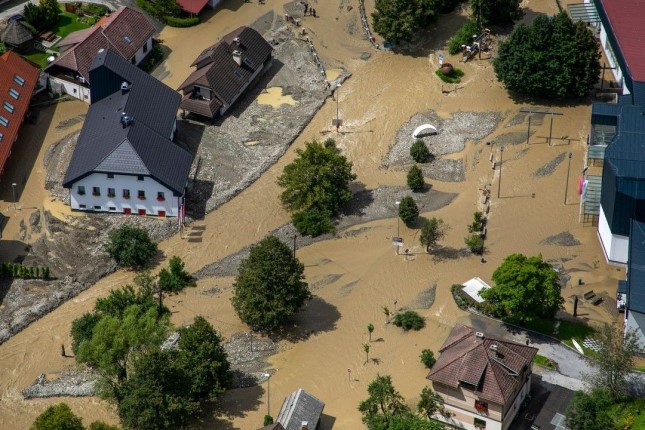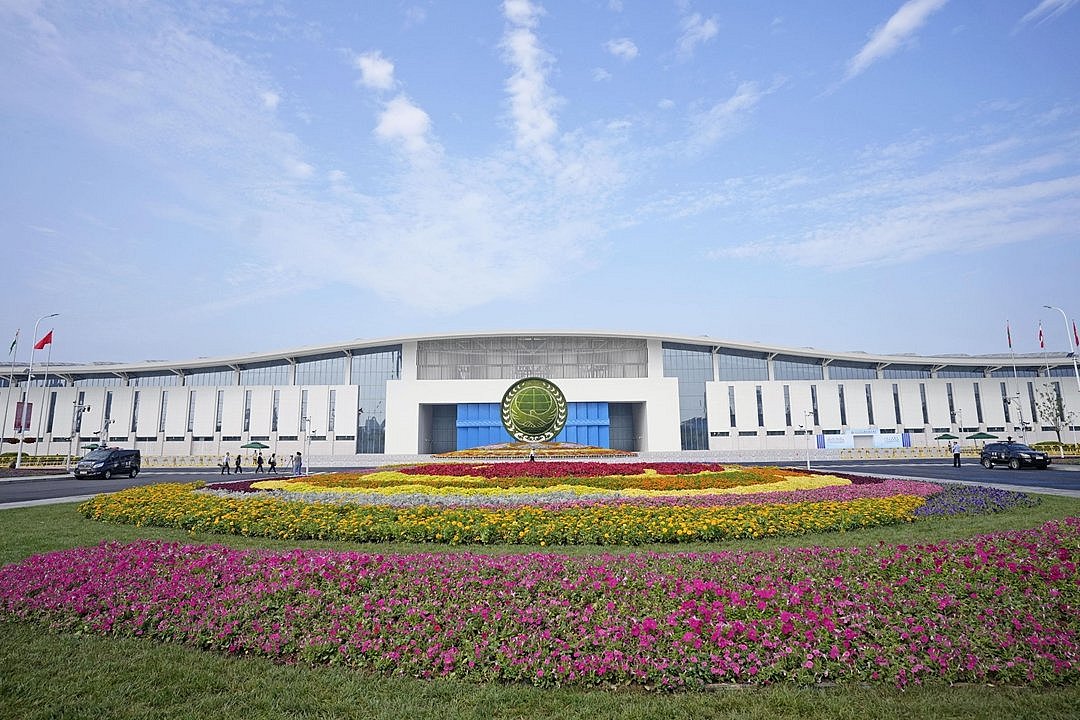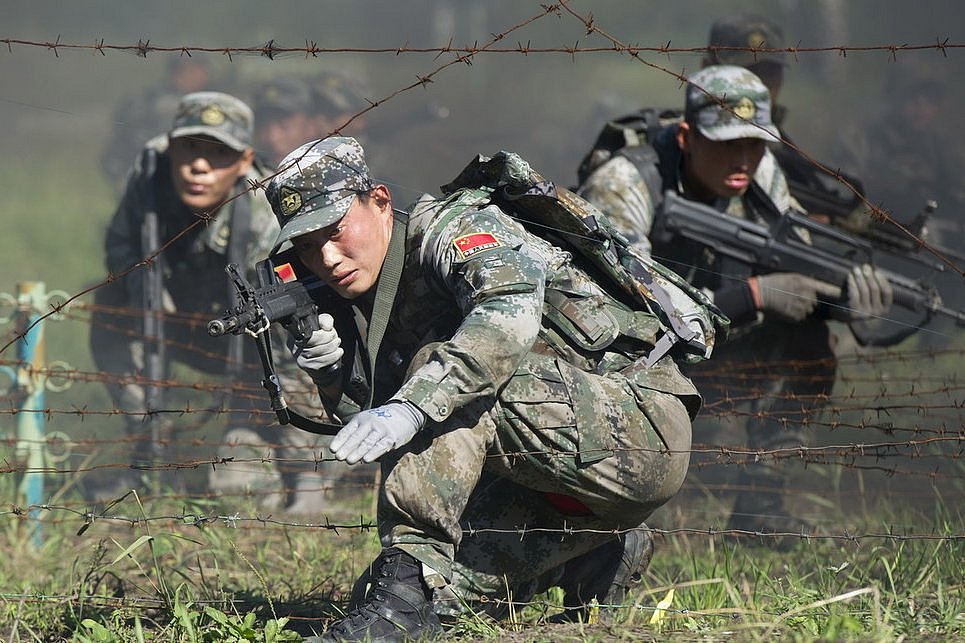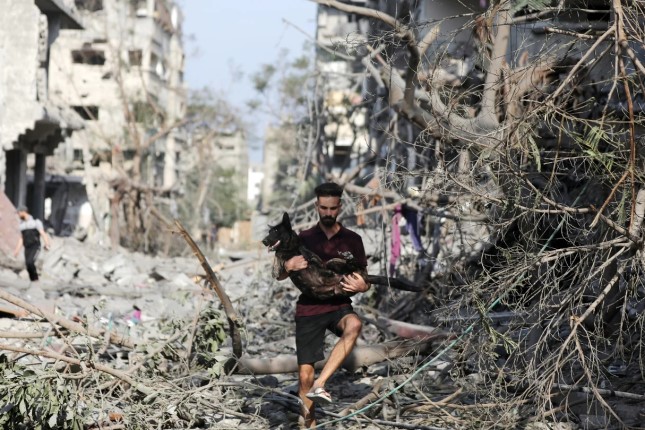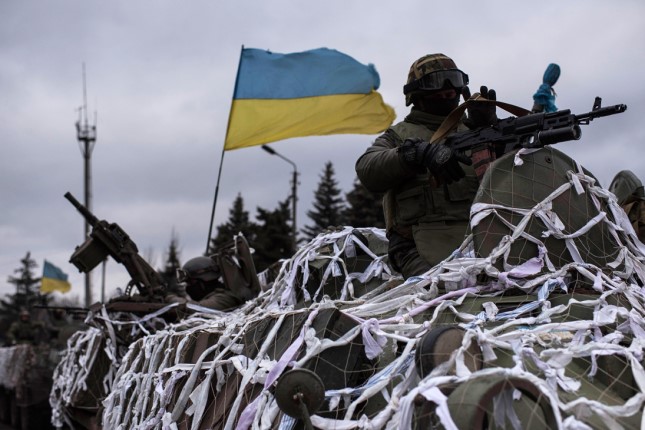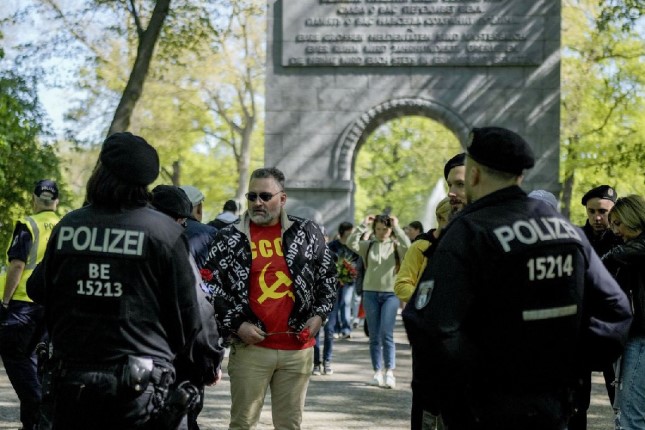Massive rainfall and flooding in recent days means there is a threat of widespread landslides. The situation remains extremely tense.
In Slovenia, six people have died so far. In the Slovenian capital of Ljubljana, a man died in the Sava River. Earlier, three people also lost their lives. Two of the fatalities are Dutch mountaineers presumed to be the victims of lightning strikes while hiking. Earlier, other Dutch holidaymakers were considered missing, but then found unharmed. Last Sunday a man was found dead in the Glan River in Carinthia, Austria.
Slovenia has been particularly hard hit. Prime Minister Robert Golob said the small country between the Alps and the Adriatic had suffered “probably the greatest damage from a natural disaster in the history of independent Slovenia.” The total damage is expected to exceed 500 million euros, he said. Slovenia has asked the EU and NATO for technical aid to repair riverbanks and destroyed houses.
The scale of the flooding is immense with about two-thirds of the country affected, following 36 hours of heavy rain last week. Numerous villages have been cut off from the outside world since Friday, and some are still inaccessible or can only be reached by special vehicles. Villages need to be supplied with drinking water and food because local infrastructure has collapsed.
Within 36 hours, civil protection services reported more than 3,700 operations nationwide, including rescuing people who had taken refuge in trees or on the roofs of houses.
On Saturday, a dam broke on the Mur Rver in the east of the country. As a result, more than 500 people were evacuated from the village of Dolnja Bistrica. In other parts of the country, people had to be rescued from the floodwaters. This was in some cases only possible from the air, following the flooding of railway tracks and motorways.
The area around Ljubljana was also badly affected. In Skofja Loka, 20 kilometres northwest of the capital, buildings were flooded and streets left under metres of water. In the Gorenjska region, on the border with Austria, there were extensive road closures due to flooding.
The town of Črna na Koroškem is one of the worst affected places. Three people died there within 24 hours of the start of the disaster.
The situation stabilised somewhat on Sunday due to decreasing rainfall, but massive landslides now threaten both countries.
In the Carinthian communities of Brückl and Keutschach, dozens of houses were evacuated over the weekend due to the threat of mudslides. Here, too, several villages were completely cut off from the outside world. By Monday afternoon alone, 400 landslides had been reported to the authorities in Carinthia and Styria.
Neighbouring Croatia was also affected by the floods. The Sava, Drava and Mura rivers coming from Slovenia brought record water levels to the neighbouring country.
A state of emergency was declared in Rugvica, Botovo on the Drava, and Mursko Sredisce and Gorican on the Mura. It was only the rapid construction of dams made of sandbags that prevented major damage to residential buildings.
Politicians in both Austria and Slovenia have been making gushing promises to provide “rapid and unbureaucratic assistance” to help those affected by the flood disaster and repair the damage. Such promises cannot hide the fact that all politicians, regardless of party colours, have shown themselves to be completely incapable and unwilling to take the measures necessary to prevent such a foreseeable catastrophe.
During the last 30 years, Austria, especially on its border with Slovenia, has repeatedly experienced massive floods.
In 1991, the worst floods since the 1950s occurred when the rivers Salzach, Inn and Enns burst their banks. Within six days, six people died as a result of the floods, and the harvest was destroyed on around 6,000 hectares of farmland. Over 50 percent of the animal population in the affected areas was also wiped out.
Just three years later, massive rainfall occurred in the east of Austria killing one person and then in August 2002, the country’s so-called flood of the century caused damage on the order of several billion euros. Nine people died.
Between 2004 and 2007, floods occurred almost every year. In 2012, in Styria, which has again been affected, violent landslides occurred after a flood, killing one person. This was followed a year later by another severe flood, causing damage amounting to several hundred million euros.
Most recently, in Carinthia in 2018, numerous communities were cut off from the outside world by floods. Despite the increasing frequency of heavy rain, floods and landslides, no significant protective measures have been undertaken.
The latest flood disaster in Slovenia and Austria is only one of numerous natural disasters in Europe in recent years that show the growing impact of global warming and climate change.
Two years ago, at least 243 people died in floods all over Europe, the majority of them in Germany and Belgium. Property damage was in the tens of billions of euros, and 200,000 households were left temporarily without power.
Last month, large parts of Europe sweltered under a heatwave in which record temperatures were reached in several countries, with highs of up to 47 degrees Celsius (117 Fahrenheit) recorded in large parts of southern and western Europe. Thousands of people died and the heat sparked devastating forest fires in many regions.
Photo: Flooding in Črna na Koroškem, Slovenia © AP Photo / Uncredited.
Source: World Socialist Web Site.
